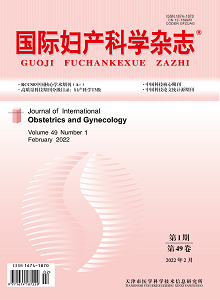Objective:To explore the clinical management and experience of fetal congenital heart disease (CHD) under multidisciplinary consultation management mode. Methods:A total of 387 singleton pregnant women were selected from Henan Provincial People′s Hospital from January 2017 to January 2020, who underwent multi-disciplinary consultation and genetic examination after echocardiography of fetal CHD, the classification and management of fetal CHD were analyzed retrospectively. Results:The common CHD includes permanent left superior vena cava, aortic coarctation, ventricular septal defect, transposition of the great artery, endocardial pad defect, tetralogy of Fallot, etc. According to the echocardiography, the complexity of CHD and the presence or absence of extracardiac abnormalities, the fetuses with CHD were divided into three groups: single CHD group (132 cases), multiple CHD group (159 cases), and combined extracardiac CHD group (96 cases), Genetic examination found that 57 cases of chromosome abnormality were induced labor. Finally, 270 cases (69.8%) pregnant women and their family members chose to terminate pregnancy, 117 cases (30.2%) continued pregnancy, of which 8 cases were lost to follow-up, and the remaining 109 cases were followed up. Among the follow-up group, 2 cases received intrauterine treatment, 3 cases died intrauterine, 8 cases died after birth, 43 cases received surgical treatment after birth, of which 5 cases died after operation, 38 cases had good prognosis, and the remaining 53 cases of CHD were generally in good condition during follow-up observation. Conclusions:Prenatal multidisciplinary consultation is helpful to the management of fetal CHD, simplify the procedure of prenatal consultation, provide more reasonable treatment advice for pregnant women, avoid blind induction of labor or continued pregnancy, guide the follow-up and treatment after birth, and improve the prognosis of retained fetus.

